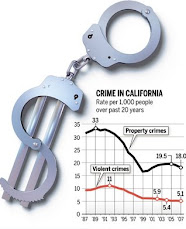Over the course of the campaign, CMJ’s research fellow monitored coverage of Proposition 6 and related juvenile justice and youth incarceration and crime stories (64 stories). We found most of the stories through Google Alerts, some Nexis searches and daily monitoring. The sample includes only a few of the stories placed by CMJ, which helped to push the voices of youth and youth advocates.
Bullet Summary:
- 92% of articles contained no youth voices.
- Victims of crime or their families are rarely quoted. In fact, they were only quoted in 6% of articles. The families of accused or incarcerated youth were only quoted in 8% of articles.
- Over 78% of articles surveyed mention race explicitly, and just 3% provide statistics related to race.
- Nearly half of the articles surveyed offer no solutions to the problems they write about (31 out of 64)
- 32% of articles provided no explanation of the root causes of crime. The next highest category was individual behavior, at 27%. 21% of articles offered lack of policing as an explanation. Because of this trend, those articles that offer no explanation will most likely lead readers to assume individual behavior as the major cause of crime. Only two articles cited lack of education as a root cause of crime, and only two articles cited pov-erty as a cause (although many mentioned poverty, few stated that poverty was a factor in creating crime).
- Stories focused on youth tended to be episodic (diamond in the rough) rather than thematic stories, which leaves readers with the impression that the thematic story is young people are criminals.
From CMJ Research Fellow Lucas Zucker:
In articles about juvenile justice, youth themselves are rarely quoted (over 92% of articles have no youth speaking). When they are represented, it is most often in the words of the reporter—only 80% of youth voices interviewed in the articles are directly quoted, a lower percentage than any other category interviewed. The perspectives most often given a voice in articles about juvenile justice are elected officials, law enforcement officers, and district attorneys. On a positive note, advocates and organizers who defend the youth perspective are frequently quoted, almost as much as police or politicians. However, it is worth noting that elected officials and police do not need to be represented by advocates in the media—they are allowed to speak for themselves. Rarely even are the victims of crime or their fami-lies quoted. In fact, they were only quoted in 6% of articles. The families of accused or incarcerated youth were only quoted in 8%.
These articles rarely mention race explicitly (over 78% do not). Virtually no articles give statistics involving race. Is this because of a genuine colorblind perspective in the media? Or does the reporter understand that readers will as-sume the race of those mentioned in the article? Furthermore, does this have the effect of making readers ignore or be unaware of the racial disparities in arrest and incarceration rates? This seems like an especially likely problem as only 3% of articles provide racial statistics. These two articles, out of the 64 surveyed, were both non-mainstream “ethnic media”. Presumably white readers do not need to hear about racial disparities, and statistics about them are only relevant to minorities.
These articles tend to depict the youth in them as essentially adults, whereas an article dealing with youth of the same age but focusing on academic achievement for example, would make the distinction that these are teenagers. This can cause the acceptance among the general public of youth being tried as adults and sent to prison with adults, as long as they are generally seen as adults within the context of their criminal activity. It also lends itself to the labeling of youth who have committed crimes as permanent criminals, rather than youth who have many years of development ahead of them.
Nearly half of the articles surveyed offer no solutions to the problems they write about (31 out of 64). On one hand, this may be a positive in terms of unbiased reporting. On the other hand, it may give readers the idea that there is no solution, and that violence is inherent in young people of color.
Some articles successfully show youth not as criminals, but as young people faced with difficult circumstances. However, often these articles focus on specific youth interviewed for the story (episodic) while implying that the rest of their peers are criminals (thematic). This gives the impression that the few good individuals who happen to have been interviewed for the article must survive amongst the overwhelming majority of their lawbreaking peers.
32% of articles provided no explanation of the root causes of crime. The next highest category was individual behavior, at 27%. 21% of articles offered lack of policing as an explanation. Because of this trend, those articles that offer no explanation will most likely lead readers to assume individual behavior as the major cause of crime. Only two articles cited lack of education as a root cause of crime, and only two articles cited poverty as a cause (although many mentioned poverty, few stated that poverty was a factor in creating crime).
In articles concerning Proposition 6, most editorials by far were opposed to the measure. However, it was often from a technical or a fiscal standpoint. When an editorial did challenge the idea that more incarceration was the most effective way to reduce crime, it was often simply a side note, with the major focus of the argument on other problems with the measure. Issues of race were rarely, if ever, mentioned. This seems to suggest that most of the writers agreed in general with the goals of Prop 6, just not with its exact methods or its timing during the budget crisis. If the ideology behind Prop 6 continues to fundamentally go unchallenged, we will only see more of the same later.








No comments:
Post a Comment